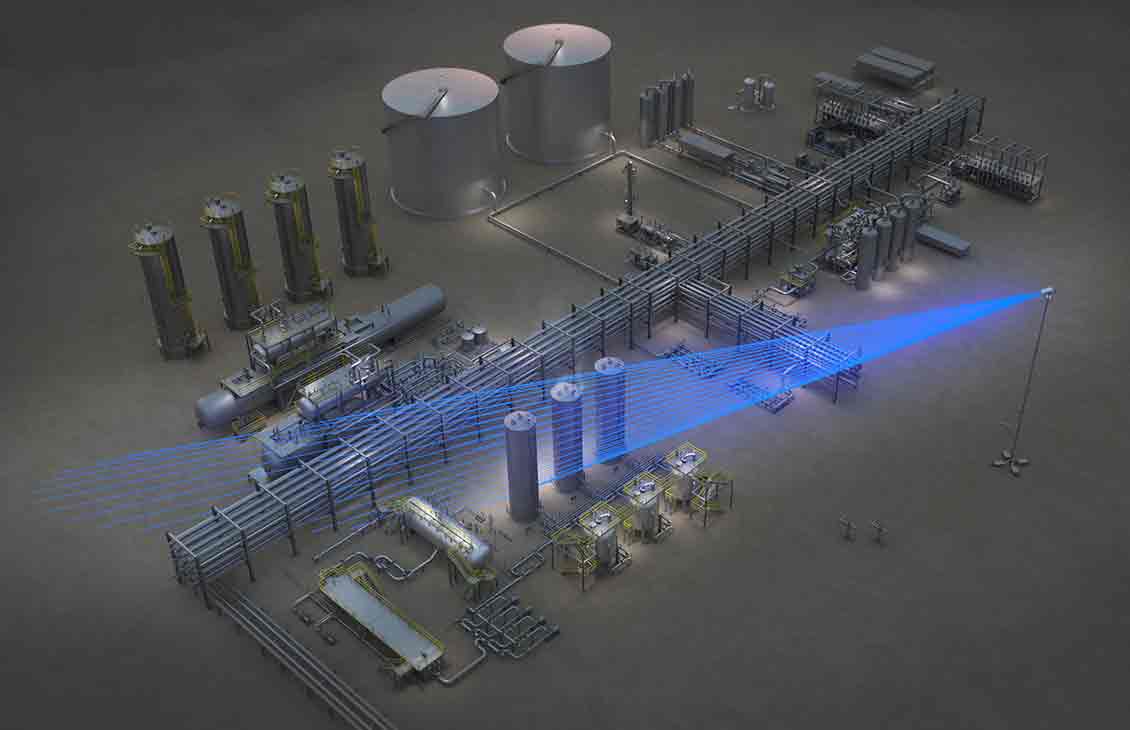Methane Lidar Camera
Achieve simple, robust, and precise visualization and quantification of gas emissions using the methane lidar camera
The methane lidar camera is approved by the EPA as an alternative test method and achieved top performance at METEC

 Our methane point instrument can be installed by your field crew in minutes without the need for specialized training or tools. The installation locations and number of instruments to mount are determined using an SLB proprietary algorithm that plans the optimal set up by evaluating the site layout and regional weather conditions. Typically mounted on existing infrastructure around the facility, built-in solar panels power the instrument, which seamlessly connects to the LTE-M cellular network. Once installed, it runs maintenance-free throughout a 10-year lifetime. It's also compatible with our intuitive, user-friendly
Our methane point instrument can be installed by your field crew in minutes without the need for specialized training or tools. The installation locations and number of instruments to mount are determined using an SLB proprietary algorithm that plans the optimal set up by evaluating the site layout and regional weather conditions. Typically mounted on existing infrastructure around the facility, built-in solar panels power the instrument, which seamlessly connects to the LTE-M cellular network. Once installed, it runs maintenance-free throughout a 10-year lifetime. It's also compatible with our intuitive, user-friendly 



